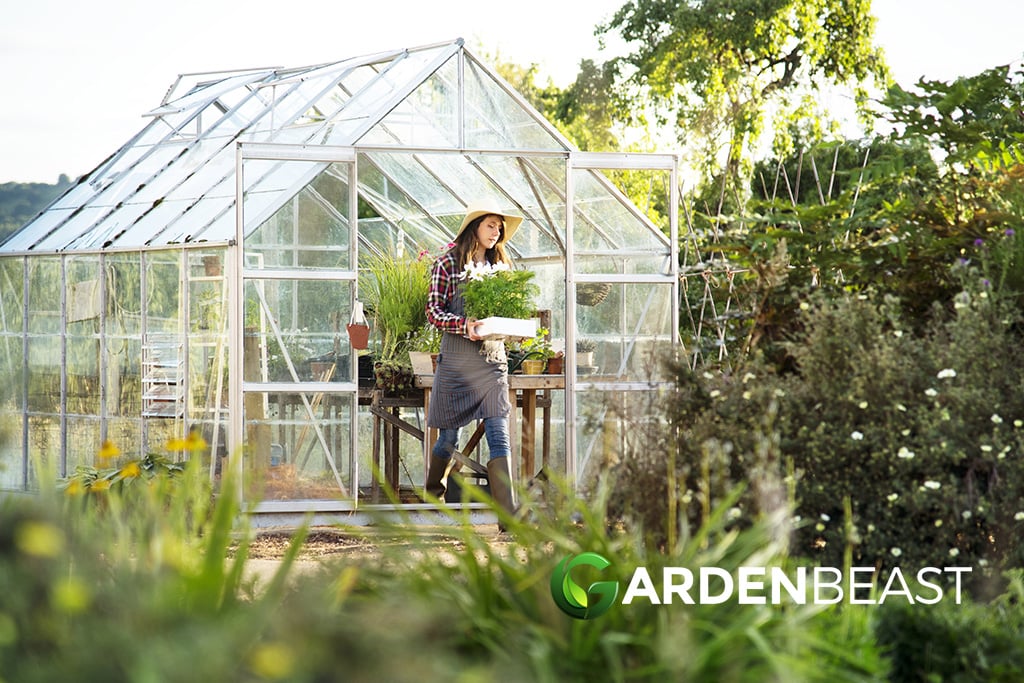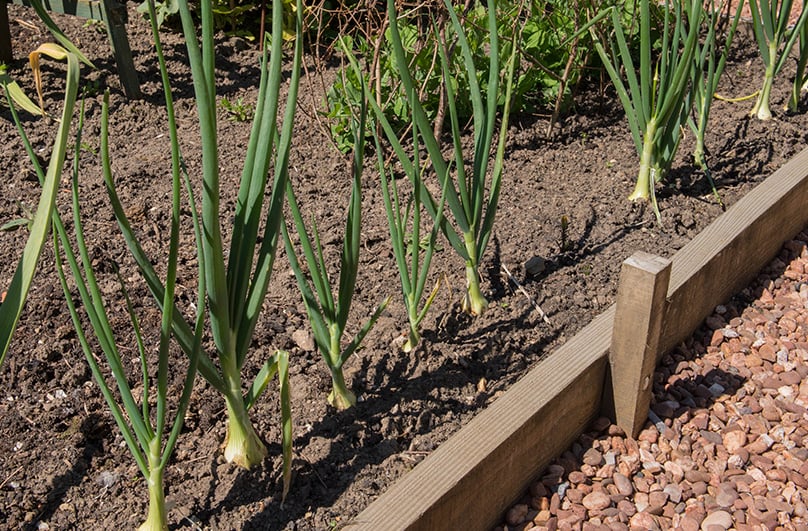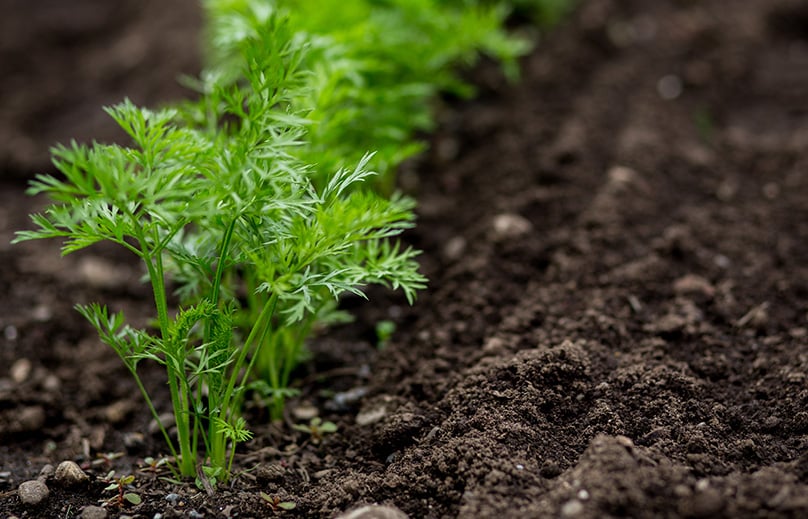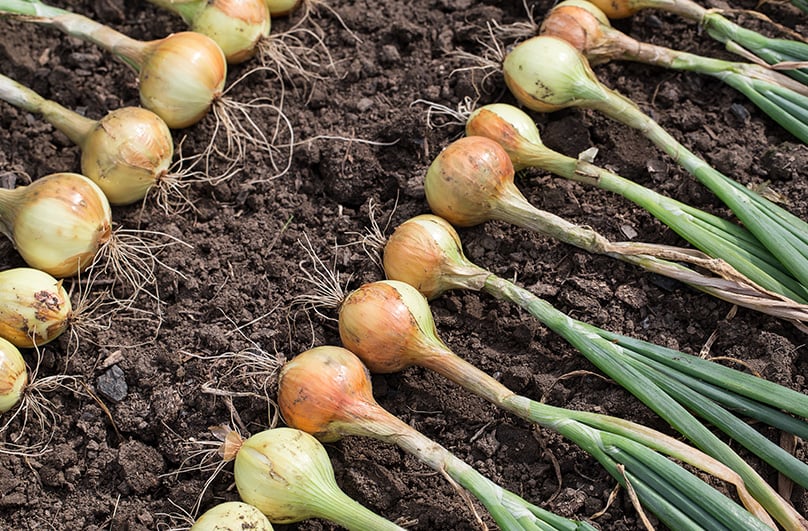Growing a vegetable garden is a rewarding experience. If you live in an area where its challenging to find fresh fruits and vegetables, then having a garden in your yard is a necessity. However, if you’re starting your gardening journey, planting a garden for the first time might seem somewhat intimidating.
Choosing the right site in your yard, assessing growing conditions, deciding on what you want to grow, and then sowing and caring for your garden is a significant task. However, the time you spend in your garden will produce a tremendous reward. When you start to harvest your organic garden, you’ll feel a sense of accomplishment and pride that makes all your effort worthwhile.
Relax, growing a garden is easier than you think. In this guide, we’ll give you everything you need to know to grow a thriving garden filled with your favorite fresh veggies.

Assessing Growing Conditions in Your State
Assessing growing conditions is the first task any gardeners need to make before they ever even think about buying a packet of seeds. If you live in the northern states, your garden requirement will be entirely different from those growing gardens in the southern states where the weather is warm all-year-round.
For instance, bell peppers and squash do well in the southern states, while asparagus and Brussel sprouts grow well in colder climates up north. Before you go on a seed spending spree, make sure you understand the best plants to grow in your environment.
Selecting Your Garden Type
When starting your vegetable garden, you have four options.
Outdoor Gardens
Outdoor gardens are magnificent for sunny states that have mild winters and plenty of daylight hours during the summertime. You can set them up on your property with easy and start growing your veggies.
Outdoor veggie gardens in sunny climates are easy to maintain and produce bountiful harvests. This type of garden is the ideal setup for newbie gardeners.
Shade Houses
Shade houses are an excellent choice for those gardeners that live in the very southern states. The hot midday sun can damage your veggies in the peak hours of the day, between 10 am and 2 pm. A shade house provides your vegetables with cover from the intense UV rays, while still allowing light to filter in to help the plants grow.
Shade houses also help to keep birds and pests out of the garden as well. You can buy a prefabricated shade house from an online retailer or make one yourself if you have handyman skills. Look to use a 30% shade cloth if you decide to go for a DIY version.
Greenhouses
Greenhouses are the ideal garden choice for people who live in colder regions of the United States. Greenhouses provide gardeners with a controlled environment where they can set the temperature, light conditions, and humidity.
Greenhouses come in prefabricated kits and can also include artificial lighting. These lighting systems help gardeners in the northern states when light conditions start to fade in the waning days of the summer.
Greenhouses are insulated growing microclimates, and you can keep them at controlled temperatures suitable for growing, even when it’s snowing outdoors. However, greenhouses can also be expensive to set up, depending on the type of accessories you include with your purchase.

Indoor Gardens
People living in Greenland and Canada are going to have a hard time growing a garden outdoors. The light doesn’t hang around for long in the summertime, and the cold sets in quickly, killing gardens fast at the end of the season.
However, it’s possible to grow a thriving vegetable garden in the far northern reaches of the United States and Canada. Growing an indoor garden allows you to control the climate conditions like you would in a greenhouse. Artificial lighting and hydroponic systems provide you with everything you need to grow an organic garden indoors.

Plan Your Garden to Perfection
After deciding on the right type of vegetable garden suits your climate, its time to start the planning process. Assuming you’ll be gardening outdoors, find the perfect spot in your yard for your new vegetable garden.
We recommend you choose a spot that gets at least 8 to 10-hours on sunlight during the peak part of the summer. Make sure there is a water source nearby, as dragging a hose around the yard can be frustrating when you need to water your vegetables.
Are Raised Beds Worth It?
Raised beds are a good idea if you’re growing asparagus and potatoes, as well as other bulbous herbs that develop under the soil’s surface. Raised beds also allow you to start your garden earlier before the ground finishes thawing.
Raised beds are also a popular choice for greenhouses and shade houses, providing a way to segregate and divide your greenhouse into sections for different vegetables. Raised beds also improve airflow and allow you better control over the soil and amendments you use.
Raised Beds Vs. Growing in the Ground
Growing in raised beds has some significant advantages over growing directly in the ground. Raised beds allow more airflow to the roots of the plants, and they provide better drainage as well. Growing in the ground is a good option if you have beds with plenty of soil amendments and a healthy ph.
Growing in clay soil in flower beds is not a good choice for your vegetable garden. Your plants need to get air to their toots to thrive. Clay soils with alkaline pH values provide terrible growing conditions for your veggies; these soils will limit the size of the harvest and invite disease to your garden.
Raised beds allow you to prepare a nutritious soil mix that drains well before you start to plant your veggies.

How to Make a Raised Bed
Building a raised bed is easy. All you need is an old pallet of some reclaimed wood, and a few steel stakes or rebar. Build a frame using the steel stakes of rebar, and then line it using the reclaimed wood.
Fill the raised bed with compost, potting soil, and other amendments like blood meal and bone meal. Leave the earth to rest for a few months over the winter before you plant your first crop in the garden.
Growing Vegetables in Pots
If you have limited space, and you want to build a mini-vegetable garden on your balcony, consider growing in pots. Pots offer you better control over the soil conditions and less involvement with pests and pathogens that can damage your veggies.
When planting in pots, ensure you use a high-quality soil mix to provide your veggies with the nutrition they need to thrive. However, it’s also important to choose containers with plenty of drainage holes at the bottom of the pot.
All plants don’t enjoy waterlogged soil conditions. Soggy soils result in the onset of root rot that kills the plants. To improve the drainage of your pots, line the bottom with a layer of pebbles. This strategy helps the soil drain, keeping the roots moist but not saturated.
If you’re growing in pots in colder regions of the United States, start your veggies indoors and leave them under LED grow lights until the conditions warm up outside.
- WINDOW BOX PLANTERS DIMENSIONS - Includes pack rectangular plastic planters. The size of plastic flower planters: L16.6 x W7 x H5.9 inches, large enough to support any projects and ideas. Great for herbs, flowers, foliage, grass, cactus, succulents, ferns, arborvitae and more.
- DURABLE PLANT POTS - Made of high quality plastic, which is recyclable, lightweight and sturdy, our window planters for outdoor can be exposed to the sun, rain and snow without discoloration for a long-lasting use. The surface of the planters is smooth, so it is easy to clean too.
- ATTACHED DRAINAGE TRAY - This large plastic plant pot with drainage features a attached saucer at the bottom for proper draining of live plants. Which helps your plants to grow healthier.
- WATER INLET DESIGN - The rectangular plant pots are designed with 2 water inlets at the bottom, so you can water your plants from the water inlet directly. This design ensures that you can water your plants well without making the tables or windowsills get wet, keeping it clean and dry.
- MULTIPURPOSE - The rectangular red planter is simple and practical, which makes it a nice home decor for your windowsill, garden, porch, balcony, kitchen, deck, patio, and other indoor outdoor use. Suitable to plant miniature roses, tulip, carnation or other flowers, vegetables, fruits.
- Sturdy Fabric Material: Made of 300g of thickened nonwoven fabric, these pots are moderately permeable, and BPA-free
- Great Drainage: Nonwoven fabric means the pots do not retain excess water, allowing your roots to breathe for healthier, more vigorous growth
- Durable, Reinforced Handles: While the competition uses flimsy handles that are merely strips of the same fabric the pot is made from, we use serger stitches to sew handles onto the pot so they can support a full bag of soil
- Portable Bags: Heavy-duty handles and rugged material mean you can move bags full of soil and plants with ease
- Use It for Years: Grow bags prevent circling root structure; Combined with pruning and trimming roots, these bags can be used and reused for years
- MATERIALS: Non-woven fabric. Fabric allows roots to breathe and grow healthier, boosts plant growth and yields. Decreased risk of transplant shock, creates improved overall root structure,and BPA-free.
- DESIGN: It Provides Water drainage through the soil to eliminate over watering. Keeps plant warmer in winter and cooler in the summer.
- MOVE AND STORAGE: The plants planted in the bag can be transported anywhere and anytime, Built-in study handles for easy movement, indoor or outdoor use and easy to fold for storage.
- ADVENTAGE: Grow more in less space-multiple varieties in one grow bags. Create a quick and easy garden.
- PAKAGE: 12 pack 5 gallons grow bags with 12 pcs plant labels. 5 gallons pot dimension: 12" Diameter 10" Height
Last update on 2024-10-17 / Affiliate links / Images from Amazon Product Advertising API
Starting Your Garden – Seeds or Starter Plants?
When starting your garden, you have two options for plants. You can either choose to grow your vegetables from seed or using starter plants. Newbie gardeners will do better and have a productive year if they decide to go with starter plants over seeds.
Most vegetables are easy to grow from seed, but you’ll have a higher success rate with established juvenile plants in your garden. Using starter plants reduces your learning curve and makes your first gardening season a more forgiving experience.
Growing Guides
- How to Plant & Grow Potatoes: Complete Guide
- How to Plant & Grow Mushrooms: Complete Guide
- How to Plant & Grow Tomatoes: Complete Guide
- How to Plant & Grow Sweet Potatoes: Complete Guide
- How to Plant & Grow Lettuce: Complete Guide
- How to Plant & Grow Carrots: Complete Guide
- How to Plant & Grow Cucumbers: Complete Guide
- How to Plant & Grow Garlic: Complete Guide
- How to Plant & Grow Onions: Complete Guide
- How to Plant & Grow Strawberries: Complete Guide
Preparing Your Soil
When preparing your vegetable garden, the most critical factor is soil quality. If you have a poor-quality soil, your plants won’t grow very well, and you’ll get a small harvest at the end of the season. Mark out the area of your flowerbed, and then go to work with a gardening fork. Loosen the soil to a depth of between 1 to 2-feet, and make sure the soil is loose.
Your plants need loose soils to help the roots spread and provide adequate drainage. Loose, loamy soil also allows more air to reach the roots of the plants, spurring growth.
If you’re working with depleted soil, then add amendments like compost, bone meal, blood meal, and chicken manure to the earth to introduce nutrients that are vital for the growing season.
Water Sources
If you’re growing vegetables, you’re going to need a water source nearby. Depending on the size of your garden, you’ll need to ensure you have a tap or stream nearby where you can secure water for your plants.
Sunlight Conditions
Your garden will need a minimum of 8 to 10-hours of direct sunlight during the day. Some plants prefer shade, while others like the sun.
Consider setting up a shaded area in one half of the garden for those plants that don’t enjoy the intense UV rays of the midday heat.
Environmental Protection
You’ll also need to ensure that your garden has protection from the wind. Strong winds can cause your vegetables and fruits to shed produce prematurely, and high wind speeds can damage branches and sensitive plants, stripping away foliage.
Build a windbreak by setting up the garden near a wall or build a windbreak using reclaimed wood.
Growing Tips
Growing vegetables for the first time can be an intimidating experience if you don’t know what you’re doing. However, treat your first season as a learning experience, and don’t be afraid to experiment a bit during the growing season.
By tinkering around your garden, you’ll gain insight and knowledge that helps you grow an even better harvest the following year. As the years go by, you’ll steadily develop your green thumb until you’re harvesting a bountiful garden of beautiful produce.
Here are a few top tips for maintaining your garden.

Watering
Water is essential for life. Without it, your plants won’t grow. However, that doesn’t mean that you need to drown your pants every day. Most vegetables enjoy it if the soil dries out slightly between waterings.
This stress helps to keep the roots from sitting in waterlogged soils that may encourage the development of root rot. Always ensure that your soil drains well, but keep it moist throughout the season. If your soil doesn’t drain well, add some perlite to improve the drainage, and prevent root rot.
Fertilizing
Most gardens don’t need much fertilizing during the season if you get the soil amendments right before planting. We recommend you use a combination of liquid and granular fertilizers when feeding your garden.
Granular fertilizers are typically slow-release, and they filter into the soil with each watering. Liquid fertilizers are better for direct feeding of plants, and foliar feeding as well.
Check the individual feeding requirements for your plants during the season. Every type of vegetable requires different levels of care, fertilizing, and attention.
Pests and Diseases
Learning how to deal with pests and diseases is one of the most frustrating experiences of planting a vegetable garden. There’s nothing more demotivating to see your plants starting to thrive, only to find everything dead a week later due to an outbreak of a disease in the garden.
If you live in a region of the United States where it rains for a few days in a row frequently during the summer, you’ll need to check your garden after each rain. Rainy and cold conditions are the perfect environments for the spread of disease on your plants. Blight, powdery mildew, mold, and other pathogens find their way to the garden in these conditions.
Pests are also a cause for concern in the garden. Aphids, leaf miners, Japanese beetles, cutworms, and a host of other pests are looking to gorge themselves on your produce. Outbreaks of disease and pests can quickly take hold of your crops and ruin your harvest. Keep an eye on your plants with regular checkups during the week.
Neem oil is a fantastic organic pesticide for use on your vegetable crops. The pungent oil deters bugs from chewing on your plants and laying eggs. Make sure that you discontinue the use of this product three to four weeks before you harvest your plants.

Rotating Your Crops
As mentioned, your garden is at risk of infection with numerous diseases during unfavorable weather conditions. Blight, bloom rot, root rot, larvae, and various other pathogens like rust and WPM are all a problem for your plants.
Many of these pathogens can overwinter in the soil around the base of your plant. As a result, if you plant new crops the following year, the pathogens emerge from the earth to infect the new plants in your next crop.
If your plants do experience disease, it’s best to dig them up and throw them away at the end of the season.
Make sure you don’t add them to the compost heap, as you’ll infect the rest of the material with the disease.
Keep 1/6 to ¼ of your vegetable garden free from any plants. Rotate this open space through different sites around your veggie garden each year. This practice helps the soil recover between seasons, allowing you to retain the nutrition and health in the soil, without overtaxing the growing space each year.
The result of rotating is a happy, healthy garden that continues to produce year-after-year. Rotating your crops takes the risk out of growing your vegetables.

Succession Planting
This technique describes planting your vegetables in stages through the season to prolong your harvest period.
For instance, you can plant peppers in mid-March and then again in later April and late May, allowing you to harvest multiple times toward the end of the season. Succession planting works for most vegetables, such as zucchini, squash, onions, and potatoes.
Companion Planting
Plants need friends too! Companion planting describes a technique where you plant other herbs around the garden to help ward off pests and disease. For instance, marigolds make an excellent border plant around the veggie patch.
The marigold produces a scent that drives away pests from the garden. However, marigolds can be somewhat invasive, and they’ll take over your garden if you don’t keep them under control.
There are plenty of other companion plants like garlic that offer unique properties in the plant that drive away pests and keep your veggies safe.
Keep Records
When planting your garden, make sure you pay attention to your panting dates. Being off by a few days can result in disaster for your plants, so make sure you time your harvest to perfection.
When planting, Note the dates in a logbook, and then forecast the harvest date. As your plants near the final stages of ripening, check on them every day, before you start to harvest.
All vegetables finish in a set period, so make sure you adhere to the growing times. For example, peppers that between 90 to 100-days to finish, depending on the variety.
Write down the planting date and the expected harvest date in your logbook. The book will remember, but you’ll find your memory is hazy if you don’t record your planting dates.
Planning and Storing Your Harvest
When harvest time starts to come around, you need to prepare for the event. Make sure you have plenty of Ziploc bags and burlap sacks for storing your veggies. We recommend you invest in a vacuum-packing machine to help you save your produce for longer after you harvest.
When it comes time to harvest, make sure you take the fruit and veggies off the plants during the early hours of the day. Don’t harvest as the sun rises, as the plant starts to produce enzymes and minerals to support the growing cycle during the day.
Picking first thing in the morning will have your fruits and veggies tasting sweetest. After picking, pay attention to the harvesting guidelines for the fruits or vegetables you’re taking from the garden. For instance, rinsing peppers before storage is fine, but you should avoid doing that for tomatoes.
Check the harvesting and storage guidelines for your specific vegetables before you head out to the garden. Investing in top-quality canning equipment is a good idea if you want to preserve your veggies for a few months after harvest.

Why Community Gardens Matter
If you live in a complex or an apartment block, check your local park areas for community gardens. Some towns and cities offer community gardens to the public, allowing you to plant any vegetables you like to benefit the community with fresh food.
Many American states don’t have access to fruits and fresh vegetables in grocery stores. A community garden can provide the people around your neighborhood with all the nutrition and fiber they need in their diets.
However, make sure that you only take what you need and leave some food for other people. Contributing plants to a community garden is an honorable and rewarding experience and the right thing to do if you’re taking produce home during the harvest season.
In the future, we expect community gardens to become more important. With the price of fresh food continuing to escalate, growing food is a cheaper choice, saving the community money that it needs for other essential household expenses.
In Closing – Share with Your Neighbors!
If you’re growing a garden in your yard, then the chances are that you’ll have plenty of fresh fruits and veggies come harvest time at the end of the summer. In most cases, you’ll find that you have far more than you can eat.
Take this overflow from your garden and use it as a chance to get to know your neighbors. Divide your excess up into a few baskets, and then go and give it to your neighbors. No-one will ever turn down a basket of fresh produce, and it’s a chance for you to strengthen your community ties in your neighborhood.



